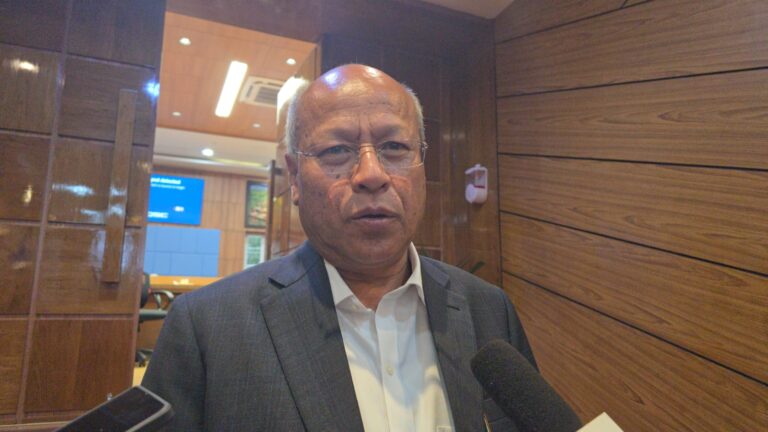FAQs on “Rule 49-O”,
“Right to Reject” and
“None of the above”
1. What is rule 49-O?
According to Conduct of Elections Rules, 1961 rule 49-O says that “Elector deciding not to vote.-If an elector, after his electoral roll number has been duly entered in the register of voters in Form-17A and has put his signature or thumb impression thereon as required under sub-rule (1) of rule 49L, decided not to record his vote, a remark to this effect shall be made against the said entry in Form 17A by the presiding officer and the signature or thumb impression of the elector shall be obtained against such remark.”
(http://lawmin.nic.in/ld/subord/cer1.htm)
2. What is the need for rule 49-O?
The voter must be able to register a vote of disapproval/rejection if they are of the opinion that none of the contesting candidates deserve to be voted for. Right to vote must also include the vote of disapproval/rejection.
3. What is “None of the above” (NOTA) option?
NOTA option enables a voter to officially register a vote of rejection of all contesting candidates available in the election. The ECI has recommended that the NOTA option must be made available on the electronic voting machine (EVM) for the voter to officially reject all candidates.
4. What is the need for NOTA option?
Before the introduction of EVMs, when voting was done through ballot papers, voters could put in the ballot paper without marking against any candidate thereby rejecting all candidates. Such a vote was counted as a rejection. However, this rejection option is not available to voters on the EVM.
5. What is the procedure to be followed for rule 49-O?
After the voter’s electoral number has been entered in the register and he has been identified, his signature/thumb impression is against his name in the voters list. The voter then approaches the presiding officer and informs him of his decision not to vote in favor of any of the candidates. The officer makes an entry namely “Refused to Vote” against the name of this voter in the list. Both the officer and the voter have to provide a signature/thumb impression against this entry.
(Refer to Chapter XXIIIhttp://eci.nic.in/eci_main/ElectoralLaws/HandBooks/Handbook_for_Presiding_Officers.pdf)
6. What is the advantage of rule 49-O for the voter?
It provides an option to the voter to reject all candidates. It also helps to keep a check on bogus voting as someone else will not be able to impersonate and vote in place of him in favor of any candidate.
7. What is the disadvantage of rule 49-O for the elector?
Secrecy of the ballot is violated as the voter has to inform the presiding officer and an entry is made against his name in the voters list. Such voters are in danger of being victimized by some candidates or political parties.
8. What happens to entries made under rule 49-O?
The numbers of such entries have to be mandatorily recorded in Form 17-A. ECI has directed that the entries should be compiled and recorded (Item 3, Part-I of Form 17C) constituency wise and sent to the Commission. This information may also be obtained through RTI.(http://eci.nic.in/eci_main/CurrentElections/ECI_Instructions/ins17032011A.pdf)
9. Is there any impact of rule 49-O on the election results?
Such voters are deemed to have abstained from casting their vote. They are not included in the counting of votes and candidate securing the maximum number of votes in the constituency is declared winner irrespective of the winning margin.(http://eci.nic.in/eci_main/press/current/pn051208.pdf)
10. What is the position of the ECI on rule 49-O?
The ECI has repeatedly recommended to the government to bring about an amendment in law (Rules 22 and 49B of the Conduct of Election Rules, 1961) and provide the option of “None of the above” in the EVMs. The recommendations are pending with the government and no action has been taken so far.
11. Where has 40 O been used before?
In Gujrat, Himachal and other states
12. Has the issue of rule 49-O been taken up legally by anyone?
PUCL had filed a PIL in the Supreme Court in 2004 to bring an amendment in law to make available NOTA option on the EVM for negative voting in restore the provision of rule 49-O in this respect. In 2009, the SC found substance in the PIL and the same has been referred to a constitution bench. (The above has been compiled by the Association for Democratic Reforms)













Hey there, You’ve done an incredible job. I will certainly digg it and personally suggest to my friends.
I am sure they will be benefited from this website.
the above mentioned provision does indeed provide yet another option for the voters and it can be deemed significant in view of individuals right to vote. But the fallacy of such provision as with any other provisions is that the secrecy of the voter’s choice is not being met, which has violated the very act and right upon which it is built. So the conclusion that can be generated if proper analysis is made is that, rather for the individual to vote and publicise his choice of ‘none of the above’, it is advisable for them to sit at home and enjoy the ‘show’,untill ammendment to such nonsense is being made. There should be no seggregation of voters who vote for different parties and those who does not vote for anybody. A secret ballot.